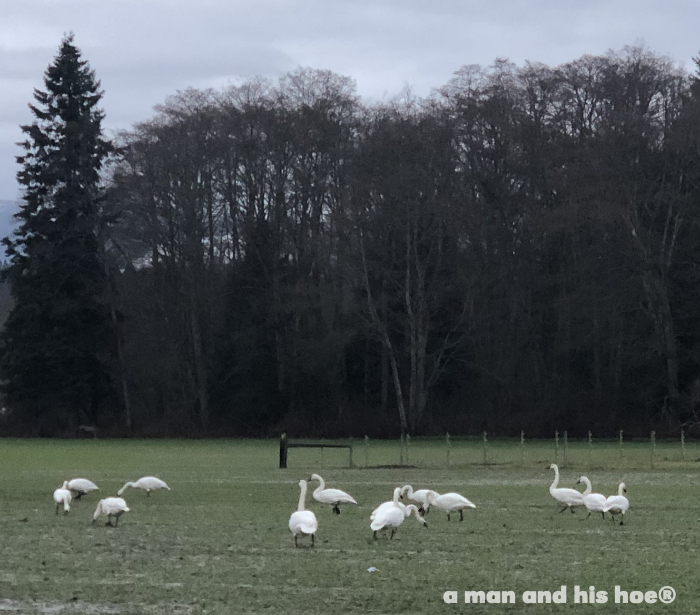Your cart is currently empty!
Month: January 2019
-
January Surprises

This morning started crisp with a dazzling sun promising surprises, promises like daffodils shooting above the frosty ground.
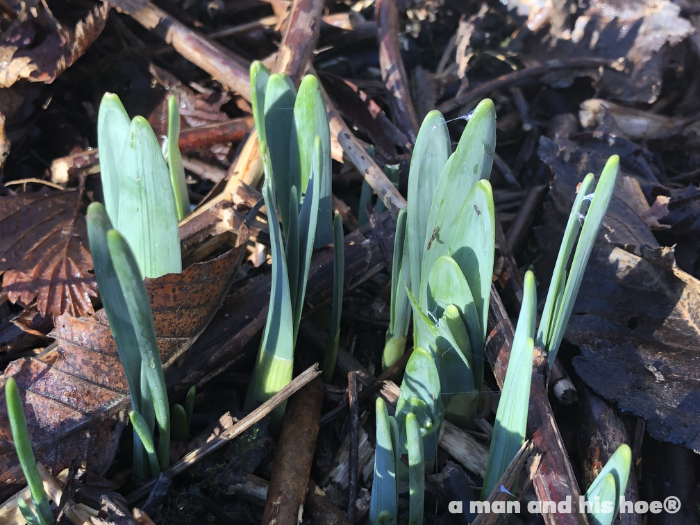

A winter daisy blooming at a friend’s house is a nice January surprise. So is efferfescent Scarlet with her flashy, droopy hat.
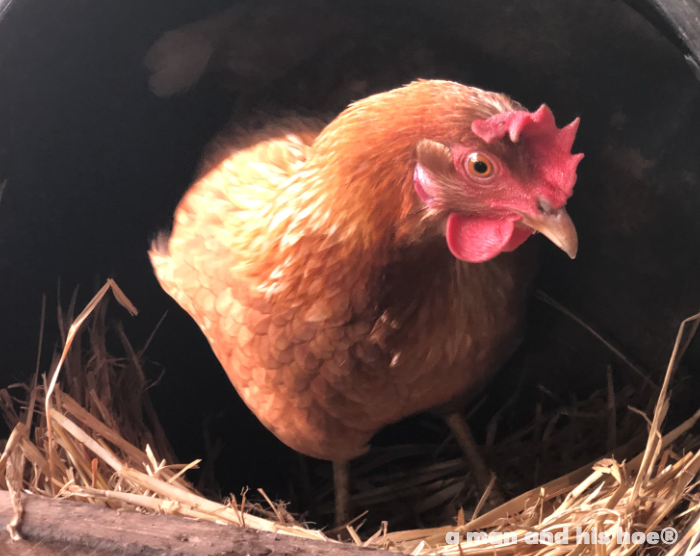

Towards evening it is so calm the pond is smoother than a mirror. The reflections of the towering cottonwoods are so real, it’s like I could reach out and touch their feathery tops. No need to slither up their trunks and risk life and limb to feel their highest branches between my fingers, all I need do is kneel at the edge of the pond and stick out my hand.
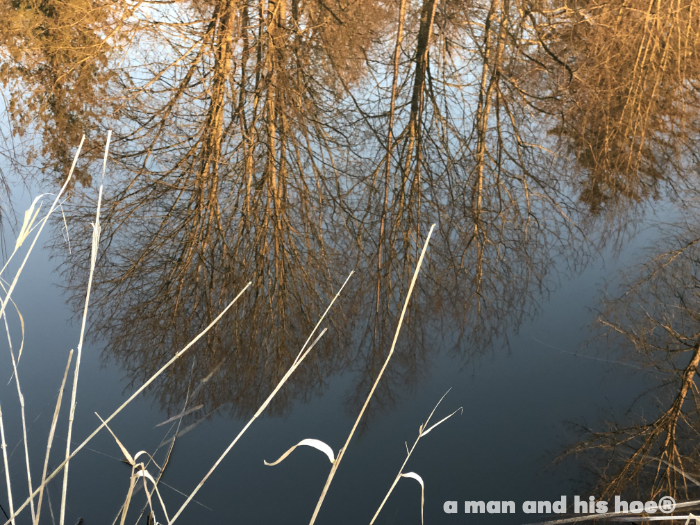

A sunset this brilliant hints of more surprises to come tomorrow.
-
March Shows Up Unexpectedly
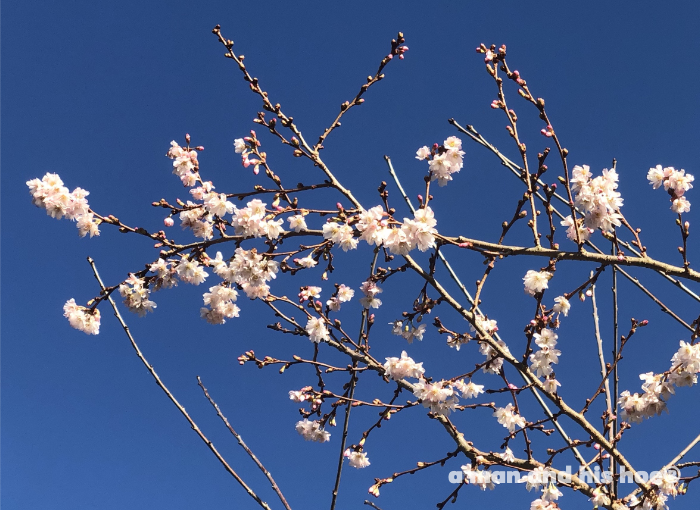
March stopped by for a visit today, bringing blue skies, cherry blossoms, and spring warmth. This odd cherry tree blooms all year long, usually just a few flowers at a time, but today it was dazzling.


While weeding the warming earth, I spotted rhubarb flush with new growth. Rhubarb swelling in January? The chickens sure are enjoying the warm weather.

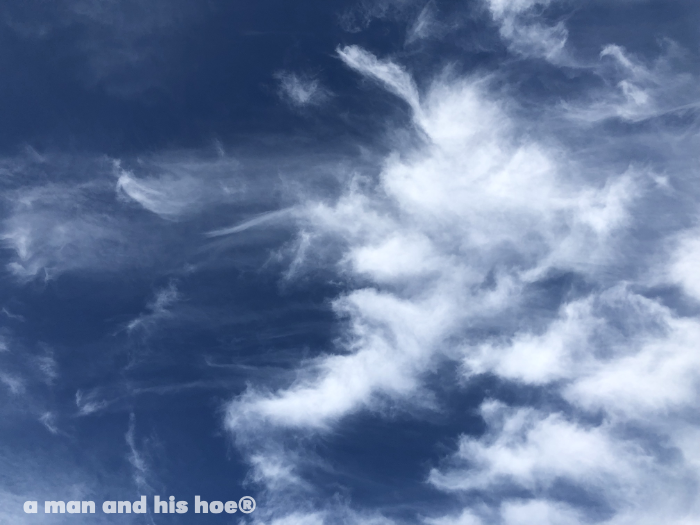
Even the wispy clouds have a touch of March.
-
A Happy Dance
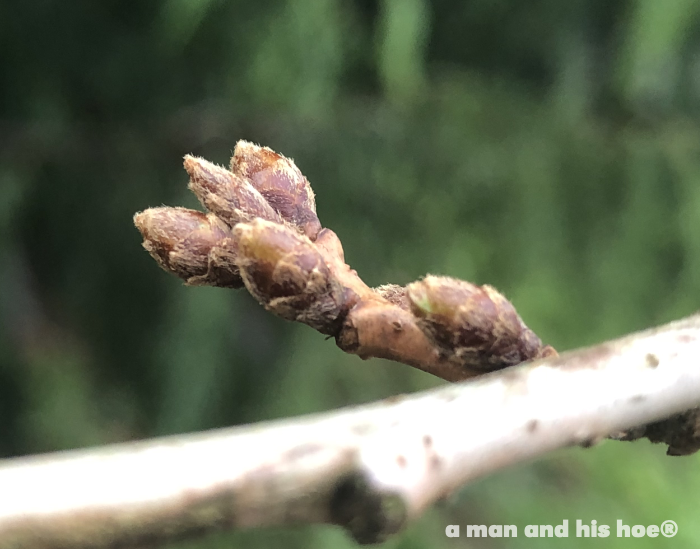
This unusually warm January has me thinking cherry blossoms. It’s too early to start counting, but once it is February 1, if you start adding the high temperature of each day in centigrades, by the time the total gets to 400, the cherry blossoms should be blooming.
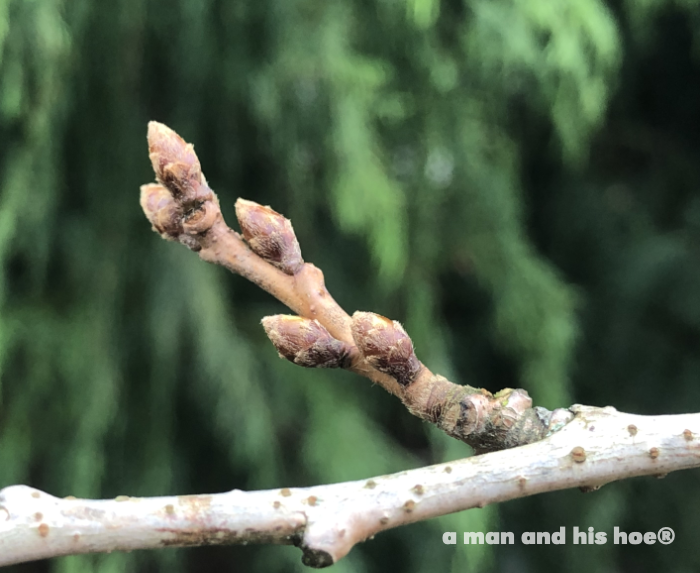

On the far side of the pond, underneath the barren cherry trees, Happy is flapping his wings. It’s not the circular courtship dance he makes when he’s in love, it’s more a, “Look how big and strong I am,” happy dance.
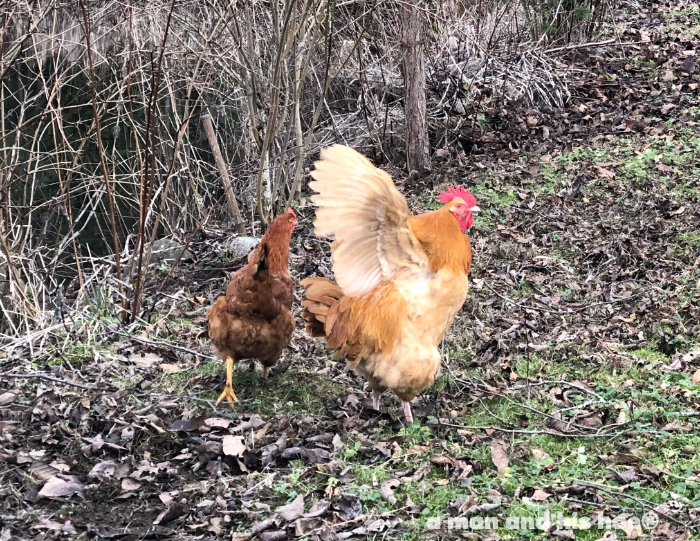

-
Far, Far Away in Pipa-Us-I
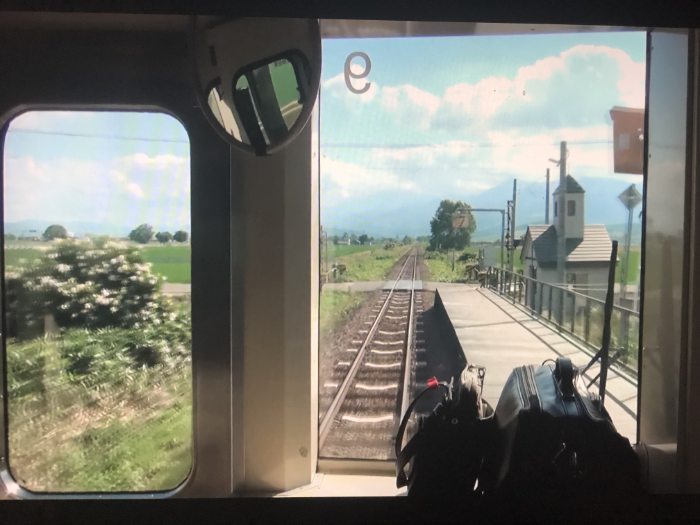
Thursdays are one of my tofu making days. It’s a quiet, peaceful thing to do, and gives me a chance to travel. Japan may have more train buffs than anywhere, and many of them record entire train rides, hours long. Pick any train line in Japan, and you can find numerous recordings of the entire line from start to end.
This morning, as I made my tofu, I was on the Furano Line in Hokkaido, watching the scenery unfold from Asahikawa to Furano. The train stopped at a station with an unusual name, Bibaushi 美馬牛, which translates to Beautiful Horse Cow, which made me research how that station got such an unusual name, which led me to discover that the name came from the Ainu name Pipa-Us-I, which means river of many mussels.
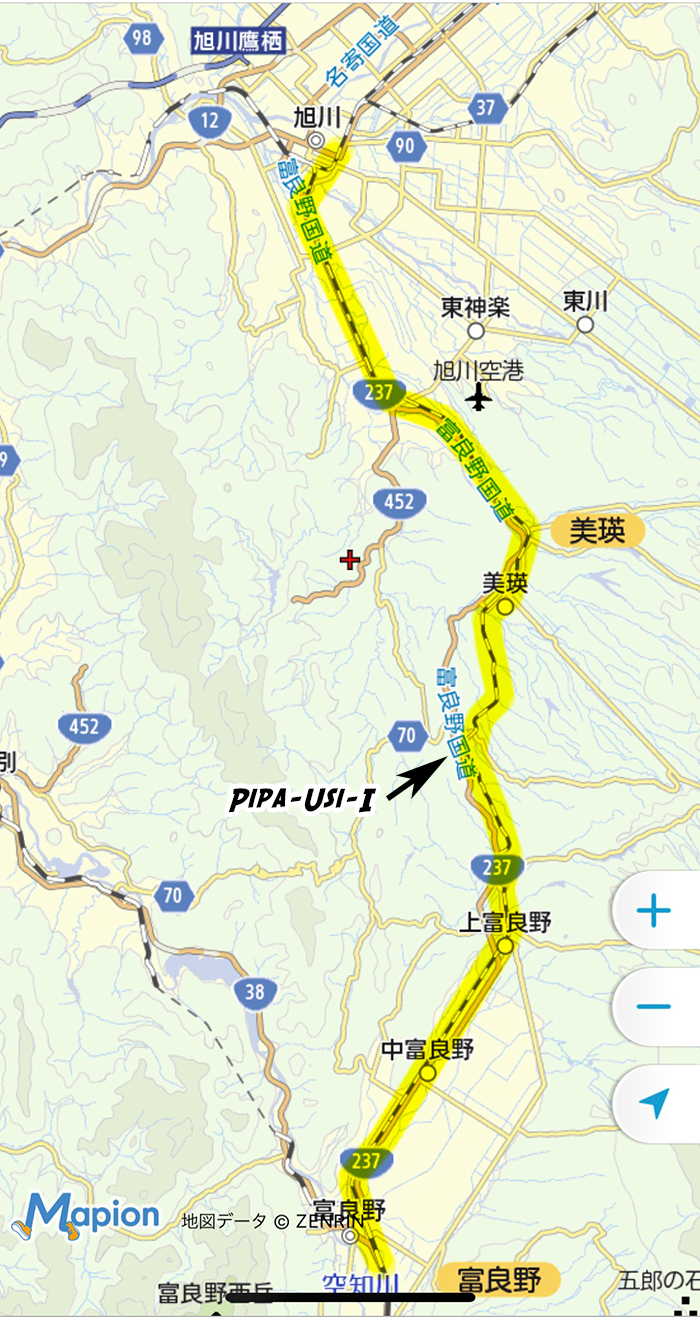
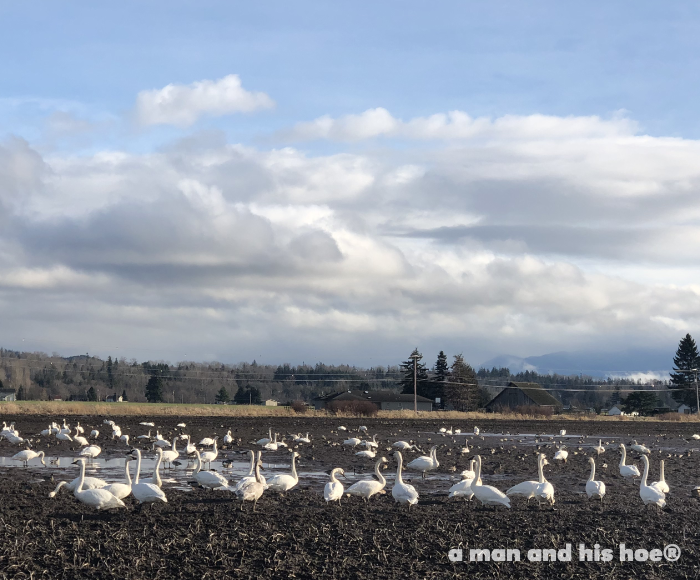
With today’s bread, egg, and tofu deliveries ready, I get to stop along the way to enjoy trumpeter swans feeding in muddy fields. How many tofu makers pass trumpeter swans on their deliveries?
-
Flying Sheep
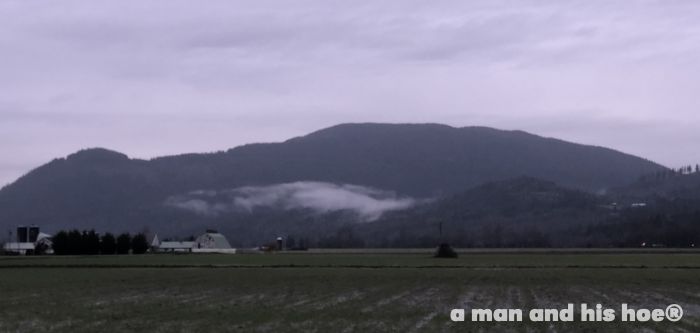
A bicycle ride to the post office is a chance to see Chuckanut Mountain in one of its winter moods. On the fields across the road from Bow Hill Blueberries the swan are grazing.
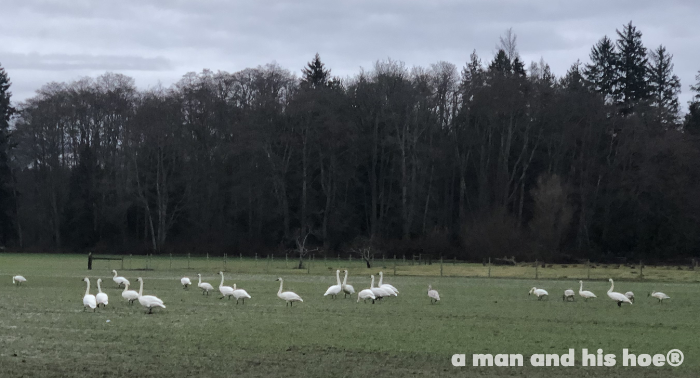
From a distance, flocks of swans look like flocks of sheep until they flap their wings and take off.
